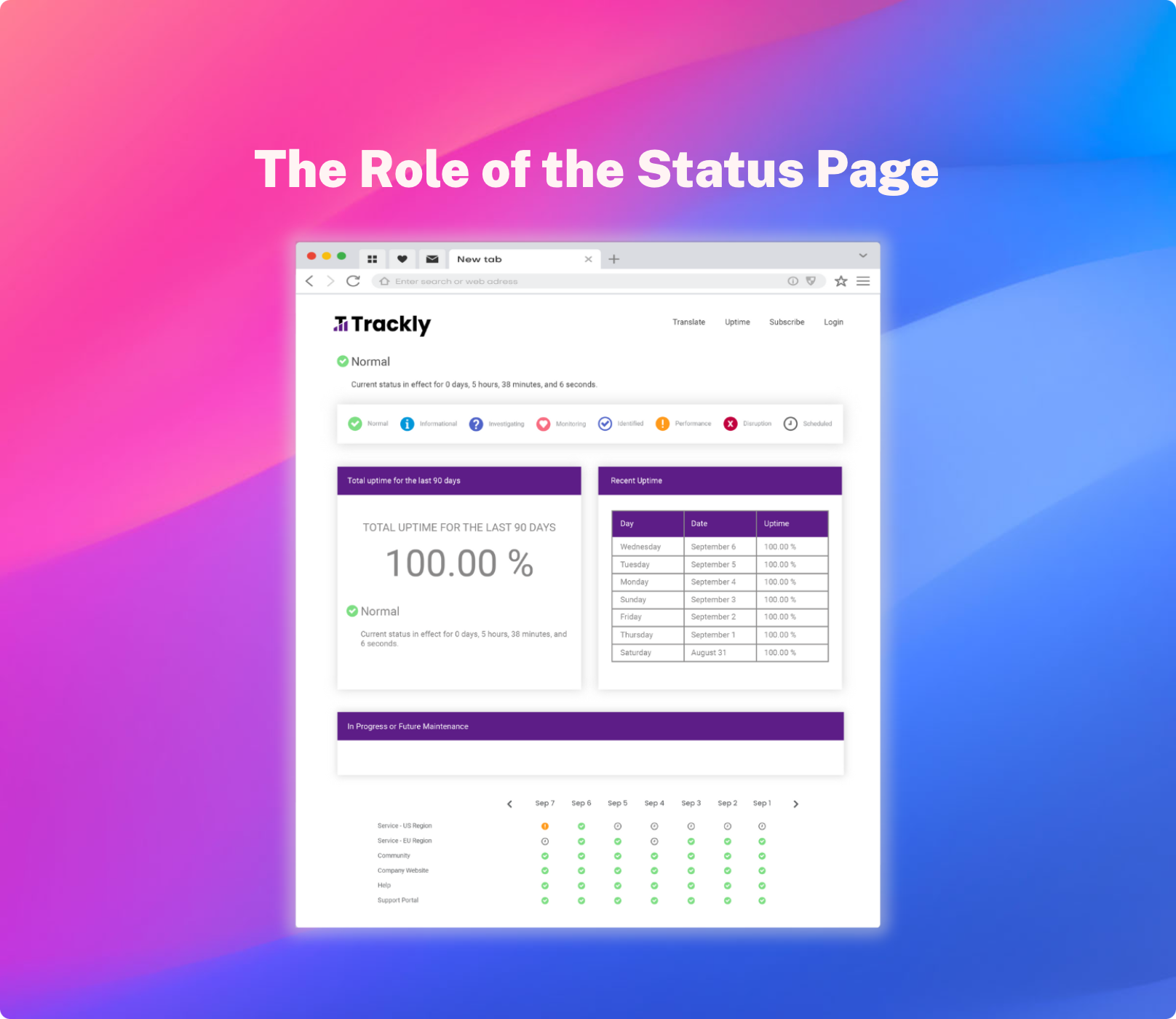Earlier this month, Pete Mastin of Cedexis shared an interesting perspective about uptime and application performance at Data Center Knowledge. In short, he noted that there are simply too many points of failure for any software to realistically achieve 100% uptime without a multi-location, globally load-balancing system. This proposed solution potentially allows for 100% uptime (when following best practices), and may or may not be economically feasible.
Regardless of whether or not 100% uptime is achievable (theoretically or practically), customer expectation demands a hosted status page to communicate application availability changes.
Customer Expectations About Uptime
When it comes to uptime and application availability, customer expectations usually fall on the “perfect execution” end of the spectrum. To put it in a more familiar context, customer expectations about functionality and usability are similarly high. In both instances, the failure to deliver on expectations results in customer dissatisfaction.
As anyone who has worked in software can tell you, a diverse mix of factors could contribute to a customer feeling like your product fell short of “perfect execution” in terms of functionality and usability. Examples might include disconnects between Sales and Product teams prior to customer acquisition, between trainers and customers during onboarding, and between support and customers once the customer has “gone live” (a more or less official milestone depending on the complexity of your application).
Similarly, as Pete Mastin notes, a number of factors can compromise the “perfect execution” of application availability (i.e. 100% uptime):
“Whether it is the UPS system, the cooling system, the connectivity or any of a myriad of subsystems that keep the modern data center working, N+1 (or its derivatives) does not guarantee 100 percent uptime… Connectivity issues (both availability and latency) are out of your control, from acts of god to acts of man. Peering relationships change, backhoes continue to cut fiber and ships at sea continue to drag their anchors. Hurricanes, earthquakes, tornadoes, tsunamis and rodents on high wires will continue to avoid cooperation with data center needs.”
You expect your customer support and/or account management teams to communicate with each customer professionally when addressing that customer’s issues with the functionality and usability of your solution. More importantly, your customers expect your staff to address them in such a timely and respectful manner. This is true whether their issue is caused by a newly discovered bug or simply user error. The onus is on your company either way.
Similarly, your customers expect communication from your company about disruptions to application availability. Whether it is unexpected downtime or scheduled maintenance, the onus is on you to communicate with your customers in a timely, professional manner.
In instances of both functionality and availability, any number of factors can contribute to customer dissatisfaction (disrupted expectations) – and timely communication is an essential component to properly resolving that dissatisfaction.
Communicating Uptime (and Application Downtime) with Hosted Status Pages
A hosted status page provides end users with an historical record of uptime for your application (this can be a helpful tool in de-escalating a volatile conversation with an angry customer). Hosted status pages will usually also provide a way for customers to subscribe to alerts for more timely communication about instances of downtime.
This process can be automated (through integration with your Application Performance Management system), password-protected (and/or restricted by IP address), and personalized by details such as geography or component – so only the end users impacted will receive the relevant alert.
Exceptional customer service is not a substitute for an intuitive user interface, but it is still a major differentiator for many customers having usability issues. Similarly, a hosted status page is not a substitute for 100% uptime (if such a thing is even possible and/or feasible), but it represents a significant benefit to customers having issues accessing your solution. StatusCast makes it easy to provide this benefit by helping you set up a hosted status page in a matter of minutes.
Click here for more information about how you can better communicate uptime and downtime to your customers.




